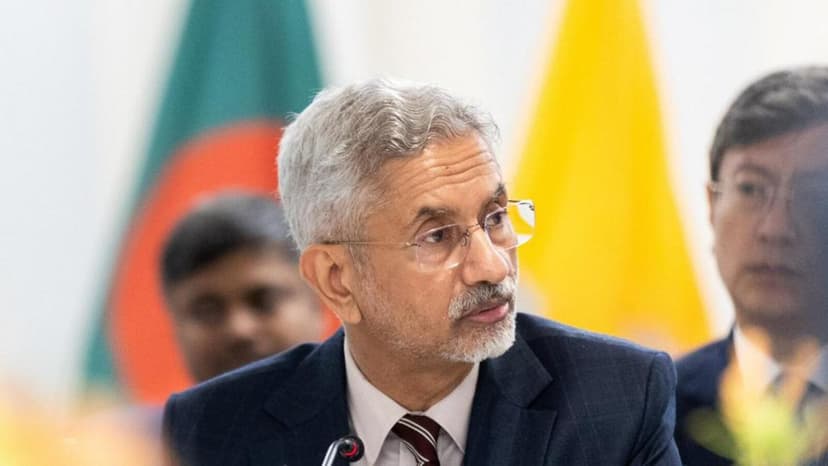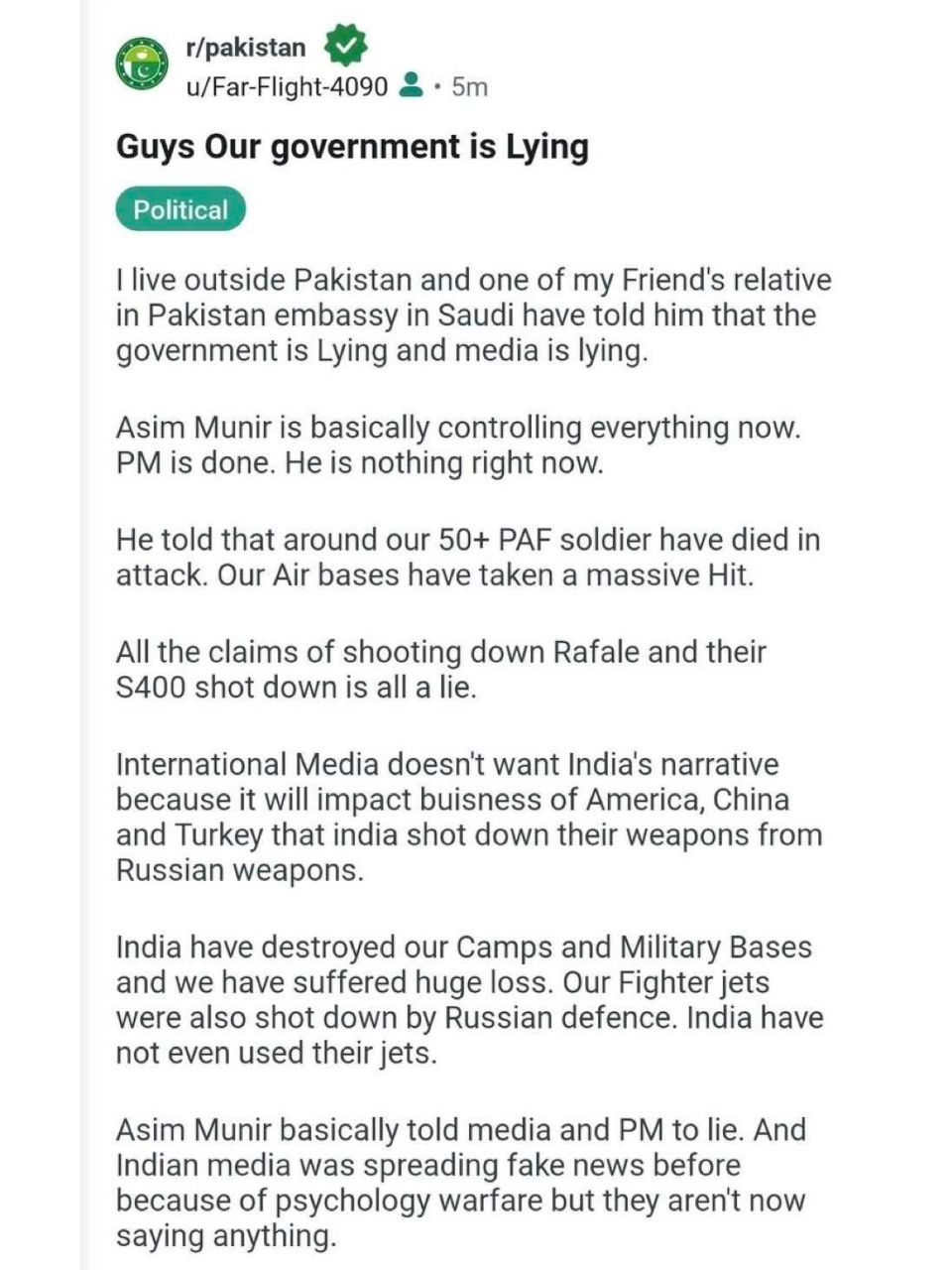Who Holds the Pause Button?
From Washington to Riyadh, how international actors temper a regional rivalry with global consequences
In South Asia, war drums don’t always sound like boots or bombs. Sometimes, they sound like an IMF wire transfer—or a FATF compliance review.
On 9 May 2025, while satellite channels speculated about a new round of retaliatory strikes between India and Pakistan, something quieter—and perhaps more decisive—happened thousands of miles away in Washington. The International Monetary Fund approved the release of $1.1 billion to Pakistan, part of a broader $7 billion bailout intended to keep the country’s economy from collapsing into the Indus.
The money came with usual prescriptions—cut subsidies, tax the untaxed, stop the rupee’s freefall. But beneath the macroeconomic jargon was an unwritten clause: don’t start a war.
Pakistan may have once held the right to escalate. Today, it must seek permission from its creditors. And those creditors, along with a chorus of global allies, watchdogs, and silent investors, now play a larger role in South Asia’s blood-and-thunder theatre than the generals who still stand at the LOC.
The New Conflict Map Is a Ledger
Pakistan, battered by inflation, energy shortages, and a rotting tax base, turned to the IMF for the 23rd time in its history. This time, the fund’s conditions came with geopolitical overtones. Islamabad’s economy, tied to Saudi deposits and Chinese loans, was no longer just a fiscal matter—it was a strategic liability.
And standing beside the IMF, clipboard in hand, is the Financial Action Task Force (FATF)—watching every rupee, every remittance, and every loophole. Though Pakistan was removed from the FATF grey list in 2022, it remains under quiet but pointed scrutiny. Any lapse in counter-terror financing enforcement—or a whiff of state complicity—could see sanctions return, just when the country can least afford them.
In essence, the message from FATF is no different from the IMF’s: discipline your economy, control your proxies, or risk global isolation.
Which is to say: Pakistan can’t afford a war.
And everyone knows it.
Delhi Learns to Hit Without Burning Bridges
On the other side of the Radcliffe Line, India has also changed. Once married to the idea of “strategic restraint,” it now practices strategic messaging.
When the Pulwama terror attack happened in 2019, India struck deep into Balakot with airpower. No declarations. Just action. And since then, Delhi has refined this playbook: targeted strikes, limited engagements, and a flurry of diplomacy to frame the narrative before anyone else can.
India doesn’t just retaliate. It curates retaliation. And it does so with one eye on Washington, one on Tokyo, and a third on Bloomberg.
Because for Delhi too, growth depends on perception. And war—no matter how justifiable—tanks perception.
The United States: Present, But Distracted
The Americans no longer want to mediate the India–Pakistan story. They’ve seen this film too many times. The new U.S. interest lies in containing China, securing supply chains, and making sure South Asia doesn’t become a footnote in a much bigger strategic screenplay.
But when the subcontinent stirs, Washington still calls.
They remind Islamabad that a war will nullify any goodwill with the IMF. They remind Delhi that global investors like calm, not cannon fire. And then, they disappear back into the Indo-Pacific.
They are not referees anymore. They’re more like an anxious landlord hoping the tenants don’t burn the house down.
China: The Iron Brother with Glass Nerves
Beijing publicly calls Pakistan its “iron brother,” a phrase that’s been worn smooth with overuse. Behind closed doors, however, China has growing anxieties. Its $60+ billion investment in the China-Pakistan Economic Corridor (CPEC) snakes through volatile regions and rests on an illusion of peace.
Every time Pakistan escalates with India, Chinese engineers in Balochistan look over their shoulders. And so does Beijing.
China shields Pakistan diplomatically—watering down UN statements, vetoing sanctions—but refuses to be dragged into its fights. Its support is conditional, calculated, and quietly exasperated.
The iron brother? More like a cautious investor wondering if the partner is worth the risk.
The Gulf’s New Terms of Endearment
Saudi Arabia and the UAE once handed cash to Pakistan with affectionate impunity. Today, they want receipts.
Yes, they’ve rolled over billions in deposits. Yes, they helped unlock the IMF deal. But the Gulf monarchies now expect reforms in return. They also increasingly see India not as a rival to Pakistan, but as a massive economic opportunity—a nation of markets, infrastructure projects, and quiet diplomacy.
So when Pakistan rings for help, the Gulf doesn’t hang up. But it puts them on hold.
Israel’s Quiet Hand
You won’t hear about Israel in the official Indo-Pak narrative. But look closely at the sky over Kashmir and you might spot a Heron drone. Or trace a signal jam to an Israeli-origin radar system. Or follow the debris of a loitering munition back to a startup in Tel Aviv.
India and Israel have built a quiet, formidable partnership in surveillance, cyberwarfare, and smart munitions. This gives Delhi an edge in any future encounter—and offers Israel a large, non-Arab market for its defense exports.
It’s a relationship of few words and many technologies.
Turkey, Qatar, and the Chorus of Support
When tensions rise, Turkey speaks. Erdoğan offers full-throated support to Pakistan. Qatar, more muted, provides energy, military cooperation, and a platform for Taliban diplomacy. But neither holds real leverage in the event of escalation.
Their support is warm, symbolic, and largely irrelevant to the new economic calculus.
They are the background singers in a geopolitical opera dominated by bigger soloists.
Iran and Afghanistan: The Two-Front Squeeze
Pakistan’s western borders are no longer quiet. The return of the Taliban has not brought stability, but sanctuary for TTP insurgents. Iran, meanwhile, launches missile strikes across the Balochistan border in retaliation for Sunni militant attacks.
Every time Pakistan thinks about turning east toward India, it is reminded that its western flank is burning.
Russia: Neutral But Not Disinterested
Moscow, once India’s stalwart partner, now plays a more neutral tune. It sells arms to both India and Pakistan. It offers mediation but picks no sides. It wants BRICS to grow, but not at the cost of watching South Asia burn.
Russia’s influence is more about what it doesn’t say—a form of passive diplomacy that still carries weight.
The Real Theatre: Not the LOC, But the Ledger
The truth is, South Asia’s most volatile border is not between Jammu and Pakistan-Occupied Kashmir. It runs between fiscal survival and strategic recklessness.
It’s drawn in IMF spreadsheets, FATF scorecards, Saudi loan guarantees, Chinese project deadlines, and U.S. strategic restraint.
The “pause button” in the ongoing conflict doesn’t lie with any general. It lies with a banker, a compliance auditor, a diplomat in Brussels, or a technocrat in New York.
Pakistan’s generals may still mock-roar from across the LOC, but the world now controls the volume.
Because in this new age, escalation isn’t merely a decision—it’s a liability. And many of the world’s most influential stakeholders, with money and stability on the line, may no longer be willing to foot the bill.




















